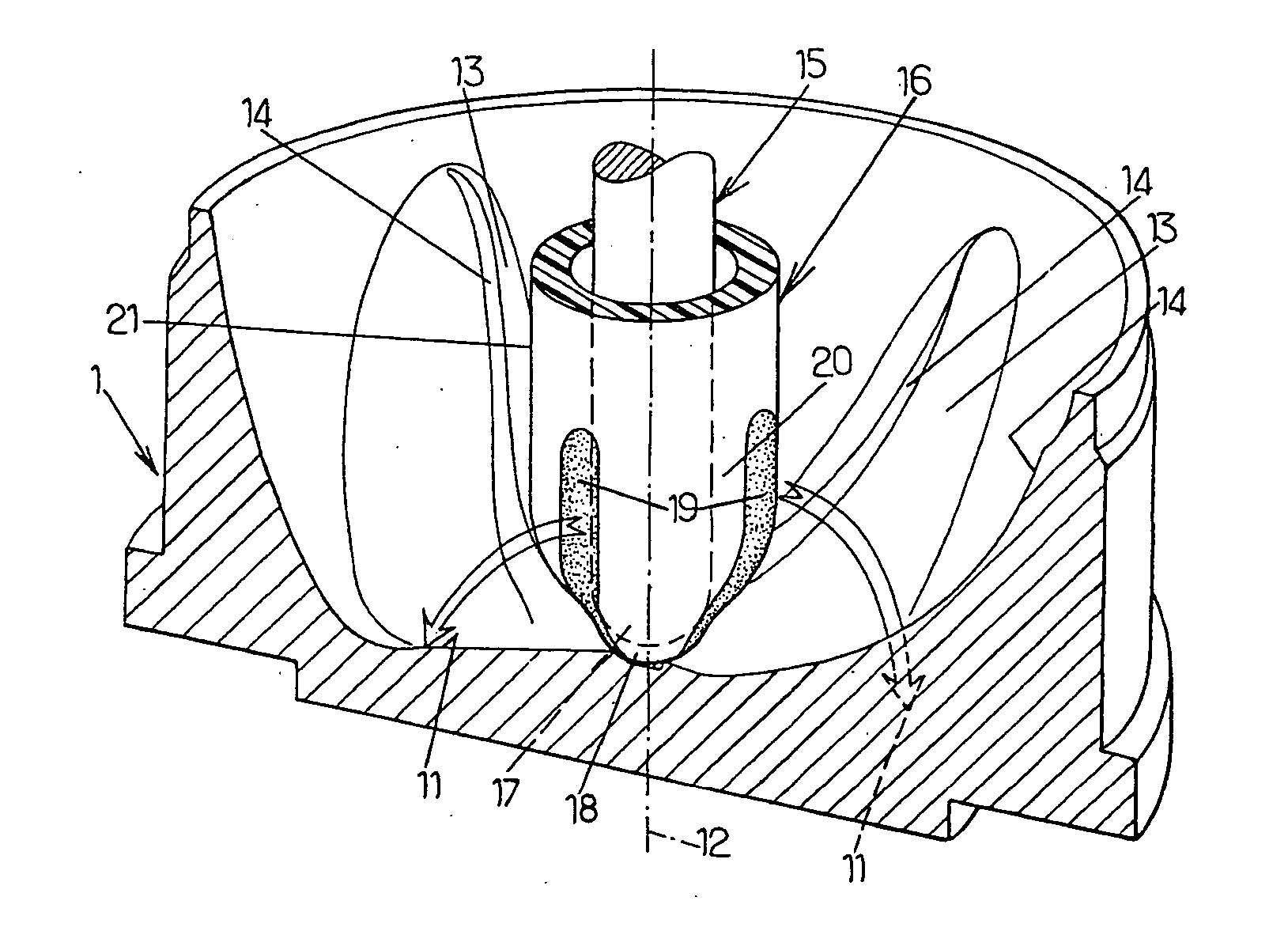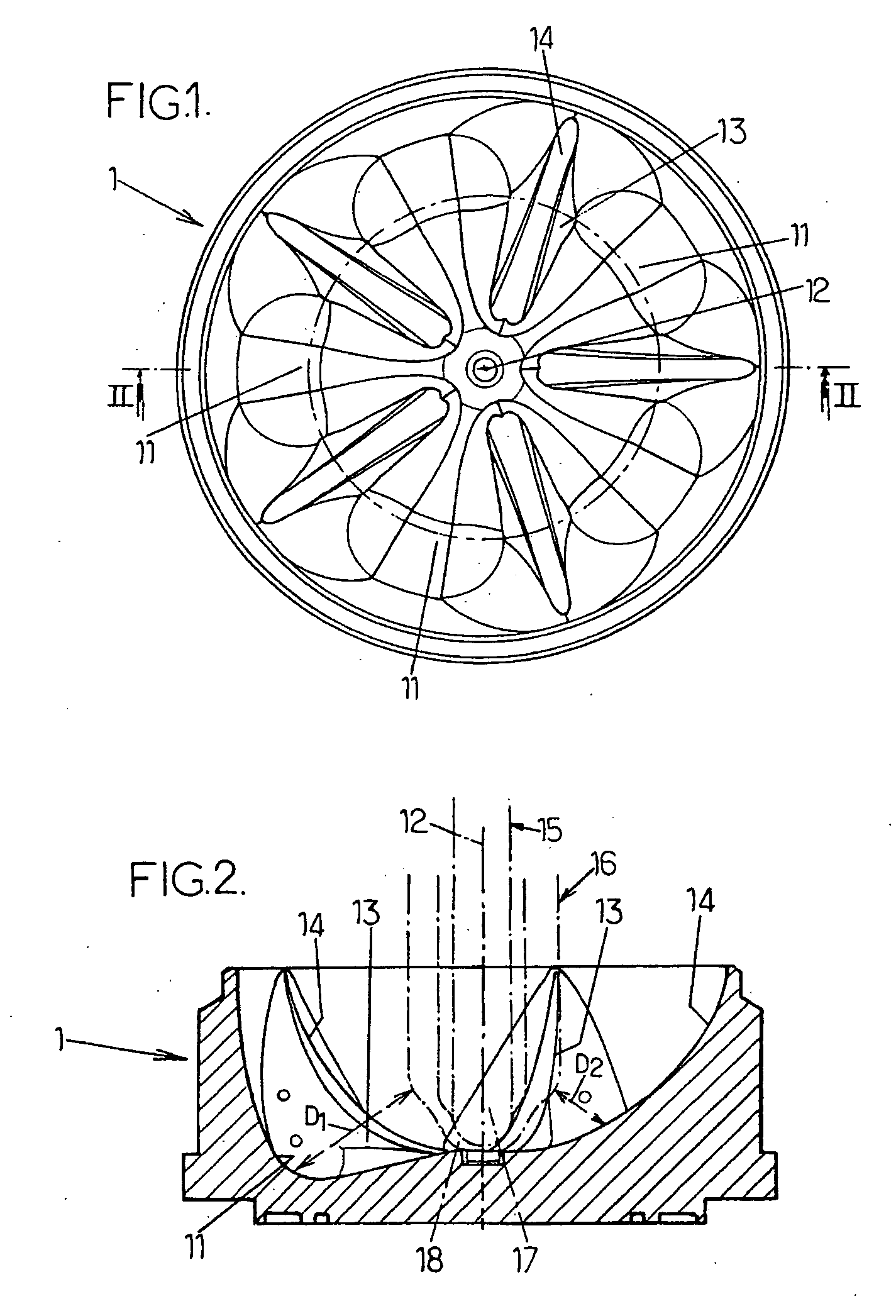Drawing-blowing method and device for molding thermoplastic material containers, in particular bottles, with petaloid bottoms
- Summary
- Abstract
- Description
- Claims
- Application Information
AI Technical Summary
Benefits of technology
Problems solved by technology
Method used
Image
Examples
Embodiment Construction
[0036]FIG. 5 is now referred to first, in which members and parts identical to those of FIGS. 1 to 4 are designated by the same reference numbers.
[0037] In accordance with the invention, it is provided that, during the drawing phase, the heat losses are reduced in the longitudinal zones 19 of the end portion 20 of the preform 16, extending over the bottom 18 of the latter and over an axial portion of the body 21 of the preform adjacent to said bottom 18, which are distributed over the periphery of the end of the preform substantially facing the respective cavities 11 of the mold bottom 1.
[0038] Thanks to this arrangement, the thermoplastic material of said longitudinal zones 19 remains at a higher temperature than that it had in the usual solution and it is therefore adapted to be drawn in a more homogeneous and better distributed fashion during blowing. Consequently, the thickness of the bottom is more uniform throughout: the central portion of the bottom is of reduced thickness ...
PUM
| Property | Measurement | Unit |
|---|---|---|
| Angle | aaaaa | aaaaa |
| Diameter | aaaaa | aaaaa |
| Depth | aaaaa | aaaaa |
Abstract
Description
Claims
Application Information
 Login to View More
Login to View More - R&D
- Intellectual Property
- Life Sciences
- Materials
- Tech Scout
- Unparalleled Data Quality
- Higher Quality Content
- 60% Fewer Hallucinations
Browse by: Latest US Patents, China's latest patents, Technical Efficacy Thesaurus, Application Domain, Technology Topic, Popular Technical Reports.
© 2025 PatSnap. All rights reserved.Legal|Privacy policy|Modern Slavery Act Transparency Statement|Sitemap|About US| Contact US: help@patsnap.com



